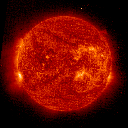Call him Pipi
 It's said to get its name from the Maori, the pipi (Donax deltoides). I think pipi (pronounced "pippy", like my mother used to call me when I was good) is a much better name than Goolwa cockle, as they call it in South Australia. Whatever, deltoides makes sense, given its delta-like shape.
It's said to get its name from the Maori, the pipi (Donax deltoides). I think pipi (pronounced "pippy", like my mother used to call me when I was good) is a much better name than Goolwa cockle, as they call it in South Australia. Whatever, deltoides makes sense, given its delta-like shape.Pipis live in the beach, rather than on it, just below the surface of the sand in the intertidal zone. When the waves retreat you can often see a little hole in the sand, which is the pipi siphoning the water, straining it for a feed.
Fishermen know them well as they are commonly used for bait. I've eaten them in the past (wouldn't do it today) and they taste pretty much like clam, but kinda gritty. Nowhere near as nice as the feed of oysters I got with a screwdriver last week on the river down near Sawtell (forgot my shucking knife ... I said "shucking"!). In my own lifetime I've seen them go from common to not so common, although they aren't scarce or endangered, as far as I know. Still, they have enough trouble avoiding being killed by anglers, Giant beach worms, birds and certain kinds of sea snail, so I don't mind leaving them alone.
Another shellfish, Mactra rufescens, can look very much like the Donax, and with both animals, the shells can often be found up on the upper margins of sandy beaches. However, the pipis are smooth and the Mactras are not, so that's how I can know these are pipis on my desk. Actually, not pipis, but pipi. That's one animal's shell next to the coin, not two, as it's a bivalve. Cute, huh? They come in lots of colours and sizes, too.



















0 Comments:
Post a Comment
<< Home